
Overview
Education is a process of acquiring knowledge, skills, values, and attitudes through formal or informal means. It encompasses a broad range of activities and experiences that facilitate learning and personal development. The primary goal of education is to nurture individuals intellectually, socially, emotionally, and morally, preparing them for a productive and fulfilling life.
GAO Tek’s radiation meters have the following applications in education:
- Teaching about radiation: GAO Tek radiation meters can be used to educate students about the nature of radiation, its properties, and its sources. By using our radiation meters, educators can demonstrate the presence of different types of radiation, such as alpha, beta, and gamma radiation, and explain their characteristics and potential hazards.
- Safety training: Our radiation meters are essential tools in radiation safety training programs. Students who are studying fields such as nuclear engineering, radiology, or nuclear medicine need to understand how to use radiation meters to measure and monitor radiation levels. They learn how to interpret the readings, follow safety protocols, and ensure they are working in safe environments.
- Environmental monitoring: GAO’s radiation meters can be used in environmental science classes to measure background radiation levels in various locations. Students can collect data and compare readings in different environments to understand how natural and artificial sources of radiation impact the environment. This application can raise awareness about the importance of radiation safety and its potential effects on ecosystems.
- Laboratory experiments: GAO’s radiation meters can be used in physics or chemistry laboratories to perform experiments involving radioactive materials. Students can measure radiation levels before and after specific reactions or manipulations, helping them understand the behavior and properties of radioactive substances. This hands-on approach enhances their understanding of radiation concepts and fosters scientific inquiry.
- Radiological emergencies: In emergency management or disaster preparedness courses, GAO’s radiation meters can be used to simulate radiological emergencies. Students can learn how to use these instruments to assess radiation levels, identify contaminated areas, and make informed decisions regarding evacuation or protective measures.
- Health sciences: Our Radiation meters can be utilized in health science programs to teach students about the principles of radiation therapy or medical imaging techniques. Students can use GAO radiation meters to measure and monitor radiation exposure during simulated medical procedures, reinforcing the importance of safety measures and radiation protection in healthcare settings.
Complying with Government Regulations
GAO Tek’s radiation meters comply or help our customers comply with the U.S. government regulations such as:
- Nuclear Regulatory Commission (NRC) Regulations: The NRC sets regulations for the use of radiation sources, including radiation meters, in educational institutions. These regulations cover aspects such as licensing, training requirements, safety protocols, and record-keeping.
- Occupational Safety and Health Administration (OSHA) Regulations: OSHA provides guidelines and regulations for workplace safety, including those related to radiation hazards. Educational institutions must comply with OSHA regulations to ensure the safety of students and employees when working with radiation meters or other sources of radiation.
- Department of Transportation (DOT) Regulations: The DOT regulates the transportation of hazardous materials, including radioactive materials and devices such as radiation meters. Educational institutions that transport radiation meters or radioactive sources must comply with DOT regulations for packaging, labeling, and transport documentation.
- Environmental Protection Agency (EPA) Regulations: The EPA sets standards and regulations for the safe handling, storage, and disposal of radioactive materials. Educational institutions using radiation meters must adhere to EPA guidelines to ensure proper management of radioactive sources and minimize environmental impact.
- State Radiation Control Programs: Many U.S. states have their own radiation control programs that establish regulations and requirements for the use of radiation meters in educational settings. These programs may include licensing, registration, training, and inspection requirements to ensure compliance with radiation safety standards.
GAO Tek’s radiation meters comply or help our clients comply with the Canadian regulations such as:
- Canadian Nuclear Safety Commission (CNSC) Regulations: The CNSC regulates the use of radiation sources, including radiation meters, in Canada. The regulations cover licensing requirements, safety protocols, training, record-keeping, and the safe handling and storage of radiation sources.
- Radiation Emitting Devices (RED) Regulations: These regulations, administered by Health Canada, pertain to the sale, lease, importation, and advertising of radiation-emitting devices, which includes radiation meters. The RED Regulations ensure that radiation-emitting devices used in educational settings meet the necessary safety standards.
- Canadian Standards Association (CSA) Guidelines: The CSA provides guidelines and standards for the safe use of radiation-emitting devices, including radiation meters. These guidelines cover aspects such as device performance, calibration, quality assurance, and safety procedures. Compliance with CSA guidelines is important for educational institutions to ensure safe and accurate use of radiation meters.
- Provincial and Territorial Regulations: In addition to federal regulations, each province and territory in Canada may have its own specific regulations, licensing requirements, and guidelines regarding radiation safety and the use of radiation meters in educational institutions. These regulations may address areas such as training, security, emergency preparedness, and disposal of radioactive materials.
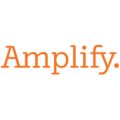
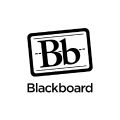
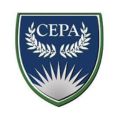
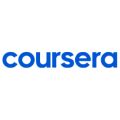

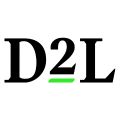




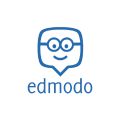
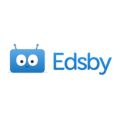
Case Studies of radiation meters in Education
Here are some practical examples of using radiation meters in education:
Evaluation of Radiation Safety Measures in Radiologic Technology Programs at JKL College: This case study assesses the effectiveness of radiation safety measures implemented in radiologic technology programs at JKL College. Radiation meters are utilized to measure radiation levels during various imaging procedures, and data is analyzed to evaluate compliance with safety protocols and identify areas for improvement.
Radiation Monitoring and Safety Practices in Nuclear Medicine Programs at MNO University: This case study focuses on radiation monitoring and safety practices in nuclear medicine programs at MNO University. Radiation meters are employed to measure radiation levels during diagnostic and therapeutic procedures, and students’ adherence to safety guidelines is evaluated. The study aims to enhance radiation safety training in the field of nuclear medicine.
Assessment of Radiation Exposure in Veterinary Medicine Education at PQR University: This case study investigates radiation exposure levels in veterinary medicine education at PQR University. Radiation meters are used to measure radiation during X-ray procedures on animals, ensuring that students and veterinary staff are not exposed to excessive radiation. The study examines the effectiveness of radiation protection measures and provides recommendations for improvement.
Monitoring of Radiation Levels in Science Laboratories at STU High School: This case study focuses on monitoring radiation levels in science laboratories at STU High School. Radiation meters are utilized to measure radiation during experiments involving radioactive materials and to ensure that radiation safety protocols are followed. The study aims to promote a safe learning environment and raise awareness of radiation safety among high school students and teachers.
Radiation Awareness and Education in Environmental Science Programs at UVW College: This case study explores the integration of radiation awareness and education in environmental science programs at UVW College. Radiation meters are used to measure background radiation levels in various environmental settings, allowing students to analyze and understand radiation risks associated with natural and anthropogenic sources. The study evaluates the effectiveness of the educational approach in developing students’ knowledge and awareness of radiation-related issues.
The main page of the radiation meters has more information on GAO’s radiation meters and their applications in various industries:
Use of Radiation Meters with Leading Software and Cloud Services in Education
GAO Tek has used or has facilitated its customers to use GAO’s radiation meters with some of the leading software and cloud services in their applications. Examples of such leading software and cloud services include:
- Data Storage and Access: Cloud services enable educational institutions to securely store large volumes of radiation measurement data. This data can be easily accessed from anywhere, allowing educators and students to retrieve and analyze information conveniently.
- Collaboration and Sharing: Cloud services facilitate collaboration among students, educators, and researchers by providing shared access to radiation measurement data. Multiple users can work on data analysis, compare results, and share findings in real-time, fostering collaborative learning and research in radiation-related fields.
- Remote Monitoring and Management: With cloud-based solutions, radiation meters can be remotely monitored and managed. Users can access real-time data, monitor radiation levels, and receive alerts or notifications if readings exceed predefined thresholds. This feature is particularly useful for monitoring radiation in laboratories, research facilities, or educational institutions spread across different locations.
- Online Learning and Virtual Labs: Cloud-based platforms can host virtual labs where students can simulate experiments involving radiation meters. This provides a safe and cost-effective way to learn about radiation measurement techniques, conduct virtual experiments, and analyze simulated radiation data. Online learning modules can be developed to provide interactive tutorials and exercises related to radiation meters.
- Amazon Web Services (AWS) for Data Analysis: AWS offers a range of services, such as Amazon S3 for data storage, Amazon EC2 for scalable computing resources, and Amazon Athena for interactive query analysis. These services can be leveraged to store and analyze radiation meter data, perform complex data processing tasks, and generate visualizations.
- Microsoft Azure for Data Analytics: Microsoft Azure provides services like Azure Blob Storage for data storage, Azure Databricks for big data processing, and Azure Machine Learning for advanced analytics.
- Google Cloud Platform (GCP) for Data Science: GCP offers services like Google Cloud Storage for data storage, Big Query for data analysis, and Google Cloud Machine Learning Engine for machine learning tasks.
- IBM Watson Analytics: IBM Watson Analytics is a cloud-based data analysis and visualization platform. It provides capabilities for exploring and visualizing radiation meter data, detecting patterns, and generating interactive dashboards and reports. It also offers machine learning capabilities for predictive analysis.
- Tableau Online: Tableau Online is a cloud-based data visualization and analytics platform. It enables educational institutions to connect to various data sources, including radiation meter data, and create interactive visualizations, reports, and dashboards.
- Alteryx Analytics Hub: Alteryx Analytics Hub is a cloud-based analytics platform that offers data preparation, blending, and advanced analytics capabilities. It allows users to connect to radiation meter data, perform data cleansing and transformation, and apply statistical analysis techniques.
- Rad Pro Calculator: Rad Pro Calculator is a software tool that assists in radiation dose and shielding calculations. It allows users to input radiation meter readings and provides calculations for dose rates, exposure times, and the effectiveness of shielding materials.
- Inspector Tools: Inspector Tools is a software application designed for radiation detection and measurement. It works in conjunction with compatible radiation meters, enabling users to collect and analyze data, view real-time readings, and generate reports.
- Ludlum Radiation Meter Software: Ludlum Radiation Meter Software is a software suite provided by Ludlum Measurements, a leading manufacturer of radiation detection instruments. It offers data logging, charting, and analysis capabilities for their radiation meters, allowing educators and students to track and interpret radiation measurements.
- Geiger Log: Geiger Log is an open-source software application that interfaces with various Geiger-Müller (GM) tube-based radiation meters. It enables users to log and analyze radiation measurements, create graphs, and export data for further analysis.
- Gamma Vision: Gamma Vision is a widely used software for gamma spectroscopy analysis. It allows users to analyze spectra obtained from radiation detectors and perform energy calibration, peak identification, and quantification of radionuclides.
- Canberra Apex: Canberra Apex is an advanced software suite for gamma spectroscopy and radiation analysis. It offers a range of tools for spectrum analysis, including peak identification, nuclide library matching, and quantitative analysis of radionuclides.
GAO Tek Has Many Customers in Education
GAO Tek’s radiation meters have been used by many customers in education, including some leading companies.
Here are some of the leading companies in education:
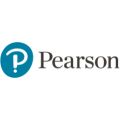
PEARSON
 MC GRAW HILL EDUCATION
MC GRAW HILL EDUCATION
 Blackboard
Blackboard
 COURSERA
COURSERA
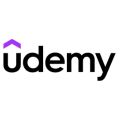


KNEWTON
 AMPLIFY
AMPLIFY
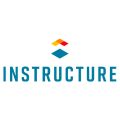 INSTRUCTURE
INSTRUCTURE
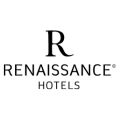 RENAISSANCE HOTELS
RENAISSANCE HOTELS
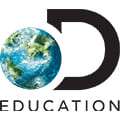
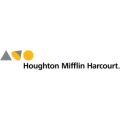 HOUGHTON MIFFIN HARCOURT
HOUGHTON MIFFIN HARCOURT
 SCHOLASTIC
SCHOLASTIC
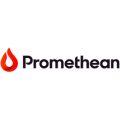 PROMETHEAN
PROMETHEAN
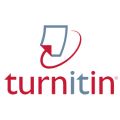
TURNITIN
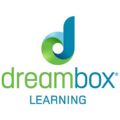 DREAMBOX LEARNING
DREAMBOX LEARNING
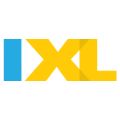 IXL
IXL
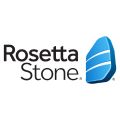
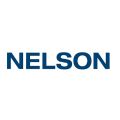
NELSON
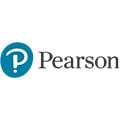
PEARSON

D2L
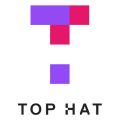 TOP HAT
TOP HAT

EDSBY
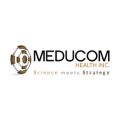
MEDUCOM
GAO Tek’s radiation meters and their applications in other industries are listed on this page:
